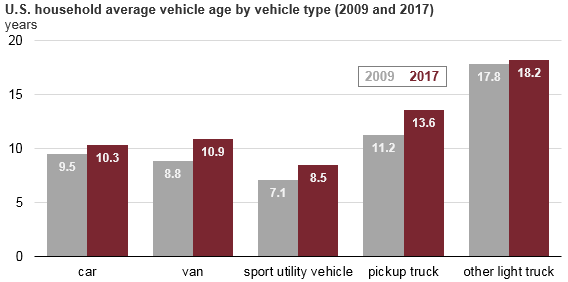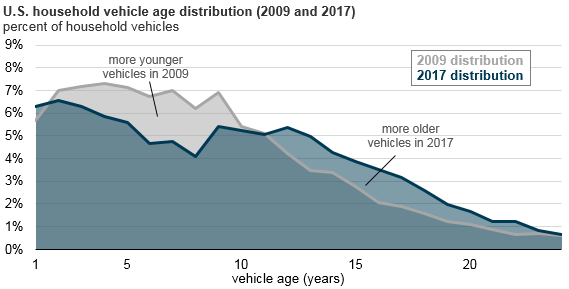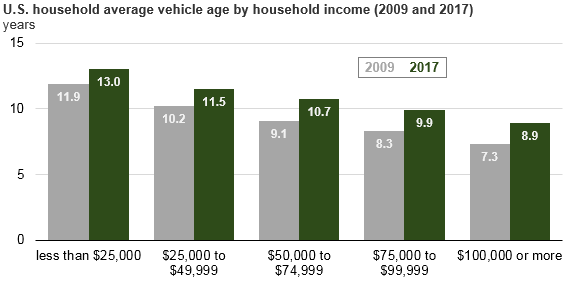The average new vehicle loan hit a record of $31,455 earlier this year and it appears that rising prices may have pushed a number of Americans to hold on their vehicles for a longer period of time.
Citing data from the Department of Transportation, the Energy Information Administration notes the average “in-use” vehicle age in the United States has climbed from 9.3 years in 2009 to 10.5 years in 2017.
The increases were across the board and there was a significant jump in the average age of pickups. While owners used to hold onto their trucks for 11.2 years in 2009, that number jumped to 13.6 years in 2017. The average age of SUVs climbed by 1.4 years, while van owners held onto their people haulers an additional 1.1 years.
While climbing prices likely played a role, the age increases occurred across all income levels. Unsurprisingly, people making less than $25,000 (£19,443 / €21,505) a year hold onto their vehicles the longest and, in 2017, this group had vehicles that were an average of 13 years old. The average age of vehicles declines as income levels increase and people making $100,000 (£77,787 / €86,038) or more hold onto their vehicles for approximately 8.9 years.
The Energy Information Administration says the data suggests that many consumers have delayed purchasing a new vehicle or have purchased a used vehicle instead. Regardless of which scenario has occurred, the increasing age of America’s vehicle fleet has resulted in consumers spending more money on vehicle repairs and maintenance.
The report also notes the slowing vehicle turnover rate has a number of different implications. Besides the obvious potential for lower new car sales, the report notes that many consumers are driving older vehicles which are less fuel efficient than new models.
H/T to Wolf Street







